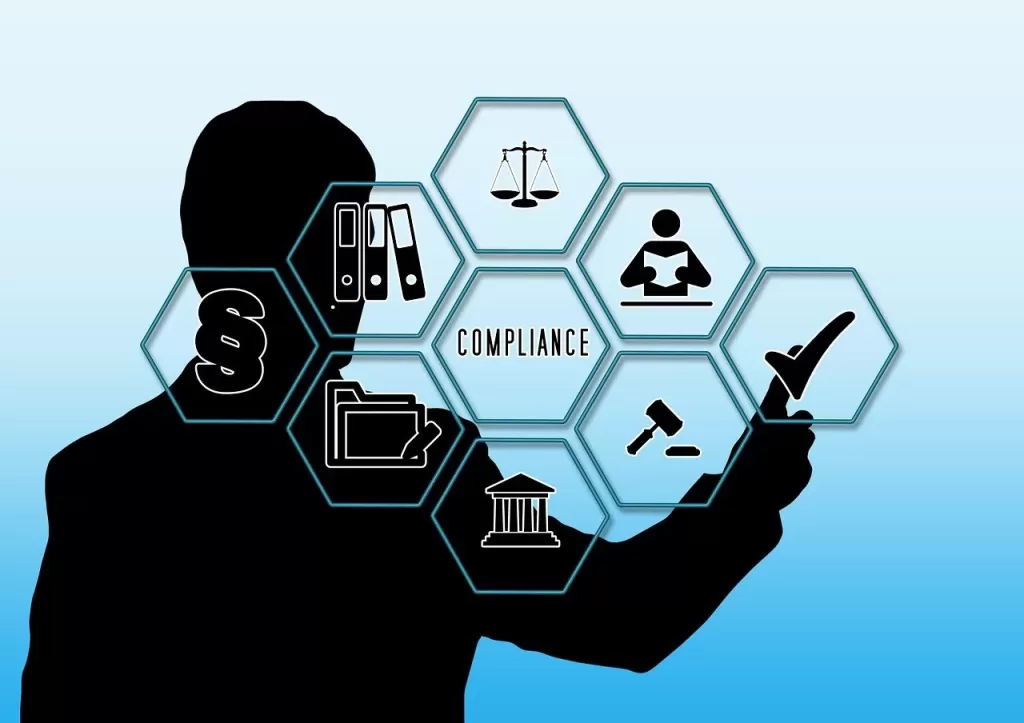LendTech Collective
Monthly Newsletter-June 2023. Edition- 125

Navigating Regulatory Compliance: How Lenders Can Leverage.
Regulatory compliance is a big deal in the lending business. It’s not something you can afford to ignore or take lightly. Following the rules and regulations set by the authorities is crucial for lending institutions to stay out of trouble and keep their operations running smoothly. Operating in a non-compliant manner can face hefty fines, legal concerns, and damage to your reputation that might be hard to recover from.
In recent years, financial institutions have faced billions of dollars in fines due to non-compliance with lending regulations. Yep, you heard it right—billions! That’s a staggering amount that could seriously dent your bottom line and put your business in jeopardy. It’s not just about playing by the rules; it’s about protecting your business and setting yourself up for long-term success.
Lenders battle compliance complexity
Lenders face significant challenges in the compliance landscape due to the complex and evolving regulatory environment. Firstly, the sheer volume and complexity of regulations can be overwhelming for lenders to navigate. They must keep up with many rules and requirements, often varying across jurisdictions, increasing compliance efforts’ complexity. Additionally, regulatory agencies frequently introduce new regulations or update existing ones, making it challenging for lenders to stay current and ensure compliance. Lenders must also invest in robust compliance systems and technologies to monitor and track compliance activities effectively. Moreover, the risk of non-compliance penalties, fines, and reputational damage adds to lenders’ pressure.
The potential costs of non-compliance are staggering and extend far beyond simple fines. Organizations lose an average of $5.87 Million in revenue due to a single non-compliance event.
Here are some recent and shocking data points to consider:
- In 2020 alone, banks were fined $14.2 Billion for non-compliance, with the United States accounting for 78% of issued fines.
- JP Morgan was fined $125 million in 2021 for failing to implement compliance controls.
Compliance efforts often require dedicated teams, resources, and ongoing training to ensure adherence to regulations. Overall, lenders must continually adapt to the changing compliance landscape, stay ahead of regulatory changes, and invest in compliance infrastructure to mitigate risks and maintain regulatory compliance.
Lenders non-compliance fallout
Unveiling the aftermath of non-compliance, lenders face the daunting fallout that reverberates through their operations and reputation.
- Financial penalties and fines imposed by regulatory authorities for non-compliance
- Potential suspension or revocation of the firm’s license to operate.
- Strained relationships with loan providers due to loss of trust and hesitancy to provide further funding.
- Limited access to financing and credit facilities hinders the firm’s growth plans.
- Adverse publicity and damage to the firm’s reputation
- Erosion of customer trust and confidence, leading to a loss of clients and business
- Rebuilding a tarnished reputation requires significant resources and time.
Mitigating Regulatory Compliance Risks: Essential Steps for Operational Resilience
In the dynamic landscape of complex regulations, gaining a profound comprehension of compliance risks is paramount. By stepping back and assessing vulnerabilities within your loan cycle you can effectively mitigate these risks and navigate the complexities of the regulatory environment.
Let us dive in and conquer regulatory compliance together!
- Robust Compliance Framework: Establish a comprehensive compliance framework that includes policies, procedures, and controls to ensure adherence to regulatory requirements.
- Regular Risk Assessments: Conduct regular risk assessments to identify and mitigate compliance risks specific to your organization. Stay updated on industry trends and regulatory changes that may impact your operations.
- Technology Adoption: Invest in compliance-focused technology solutions such as automated monitoring systems, data analytics tools, and risk management software to enhance efficiency and accuracy in compliance processes.
- Compliance Monitoring and Reporting: Implement robust monitoring mechanisms to identify and address compliance issues proactively. Maintain accurate records and generate timely reports to demonstrate compliance with regulatory authorities.
- Regular Compliance Reviews: Conduct periodic reviews and assessments of your compliance program to identify gaps or areas that need enhancement and implement necessary adjustments.
How can Insight Consultants help?
Building an effective compliance strategy is crucial and can be a big lift for firms. At Insight, we are flexible in supporting your compliance responsibilities.
We offer:
- Automate and customize adverse action notices, ensuring adherence to regulatory requirements while streamlining the process and improving consumer communication efficiency.
- Generate personalized notices tailored to individual consumers, reducing errors and enhancing communication effectiveness.
- Support multiple versions of customizable notices, accommodating diverse variations and specific requirements, providing the necessary flexibility in the notification process.
- Automated email, text, and on-screen notifications to ensure the generation of disclosures within the specified time frame, promoting timely delivery and compliance.
- Additional automated email, text, and on-screen notifications to ensure that applications are decisioned following your institution’s service levels.
- We have established systems and procedures to effectively handle data collection, testing, and compliance requirements associated with regulations such as HMDA, CIP, MLA, HPML, HCML, ATR, and QM.
- Text /email alert system to notify users of any changes in loan status, including loan declines, withdrawals, or other updates.
With the ever-changing regulatory landscape, lending firms are presented with a prime opportunity to use technology to proactively reshape their compliance function. By strategically modifying their operating model and processes, they can elevate the quality of oversight and drive operational efficiency. Embracing this transformative journey equips lending firms with a competitive edge, allowing them to deliver exceptional service, optimize costs, and effectively manage operational risks.
If you want to learn more about our compliance management services, contact us here.

Fraudsters Beware: Unleash the Power of AI in Lending Fraud Detection.
In the lending industry, a critical cornerstone of global economies, a mounting menace looms large: Fraud. As technological advancements continue, so do the increasingly sophisticated tactics fraudsters employ. Financial institutions within the lending sector face a particularly heightened risk, making it imperative for robust countermeasures to safeguard lenders, preserving the integrity of economic systems and upholding trust within the lending ecosystem. Here, we dive into the intricate realm of fraud detection within the lending industry, exploring effective strategies to strengthen defenses against this pervasive threat.
Exploring the dark side of lending fraud
Lending fraud involves deceptive practices where fraudsters manipulate information to obtain loans fraudulently.
Let’s have a look at the different types of lending fraud that are on the rise:
- First-party loan fraud: To secure credit approval beyond their eligibility, applicants often intentionally provide false information or inflate their financial status. These illegal attempts make most digital lenders misconstrue first-party fraud as a credit loss.
- Second-party loan fraud occurs when an individual gives their personal information to another person to commit fraud.
- Third-party loan fraud (identity theft): Third party fraud occurs when an individual utilizes a counterfeit identity or misappropriates someone else’s identity (without their consent) to obtain credit without the intention of repayment.
Significant causes behind the surge in loan fraud
Online lending fraud is constantly rising; statistics show that small and midsized loan frauds increased by 6.9% since 2022. Due to the surge in popularity and faster transaction cycles, online lending is a prime target for cybercriminals.
Let’s look at some of the primary reasons for increased loan fraud.
- Cyber and Data Breaches: Cybersecurity breaches or data leaks can expose sensitive customer information, providing fraudsters with the necessary data for identity theft or other fraudulent activities.
- Increased Digitization: As more lending processes move online and digital platforms are used for transactions, it creates opportunities for fraudsters to exploit vulnerabilities in digital systems and processes.
- Social Engineering Techniques: Fraudsters use social engineering tactics to manipulate individuals into providing sensitive information or making fraudulent transactions, taking advantage of human vulnerabilities.
- Faster Payment Processing: Faster payment processing can pose a challenge, with less time available for lenders to scrutinize transactions for fraud.
- Cross-Border Transactions: Cross-border transactions can make verifying information and detecting fraudulent activities more challenging, especially when dealing with different regulatory frameworks and jurisdictions.
Stop fraud before it happens.
In the fast-paced world of cybersecurity, staying informed and knowledgeable is crucial for individuals and organizations to counter the constantly evolving nature of cyber threats effectively. Thanks to technological advancements, people and businesses can utilize knowledge as a powerful weapon against the increasingly sophisticated tactics employed by cyber attackers. Amidst the rising tide of cyber threats, Artificial Intelligence is emerging as a crucial tool to bolster cybersecurity and thwart attacks.
Research indicates that 63% of financial institutions believe AI can potentially prevent fraud. In comparison, 80% agree that AI is critical in reducing fraudulent payments and thwarting attempted fraud. Machine learning technology, a subset of AI, can be effectively deployed across various channels within the lending workflow, such as transactions and loan applications.
AI can analyze vast numbers of transactions to uncover fraud patterns and eventually use them to detect fraud in real-time and even prevent it. AI solutions may incorporate data mining to uncover meaningful patterns, neural networks to learn complex relationships, and pattern recognition techniques to identify fraud-specific patterns. The combination of these approaches helps in detecting and preventing fraudulent activities.
How can AI enhance lending fraud detection?
AI fraud detection can contribute to minimizing financial losses and protecting lenders from fraudulent activities in several ways:
- Early Fraud Detection: By analyzing extensive data sets (customer data, historical data, external data), AI algorithms can swiftly identify suspicious patterns, anomalies, and potential fraud indicators. This enables early detection of fraudulent activities, mitigating financial losses for lenders.
- Advanced Risk Assessment: AI systems excel in assessing the risk associated with loan applications, leveraging diverse data sources such as borrower profiles, credit histories, and transaction patterns. This empowers lenders to make well-informed decisions and detect fraudulent applications more effectively.
- Behavioral Analysis: AI algorithms are trained to identify patterns and establish baseline behaviors for each customer. Analyzing historical data allows AI systems to identify regular activities and profile customer behavior. Any deviations from these established patterns can then trigger alerts, indicating potential fraudulent behavior. This proactive approach empowers lenders to respond swiftly, take necessary action, and mitigate any resulting losses.
- Real-time data monitoring: Continuously monitor transactions and detect anomalies in real time. This proactive monitoring helps identify suspicious activities, such as account takeovers or unauthorized transactions and enables quick response to mitigate potential losses.
- Adaptive Learning: AI systems can continuously learn from new data and adapt to evolving fraud patterns. By staying updated on the latest fraud techniques, AI can better identify emerging threats and adjust fraud detection algorithms accordingly.
- Network Analysis: AI-based systems can analyze interconnected relationships among individuals, organizations, and accounts to identify complex fraud networks. This network analysis helps uncover organized fraud schemes and take appropriate actions to prevent financial losses.
Deal with Lending Fraud Risks Effectively
Online lenders can identify automated and more complex fraud attempts faster and more accurately by combining supervised and unsupervised machine learning as part of a more extensive Artificial Intelligence (AI) fraud detection strategy. AI-based fraud prevention provides increased accuracy, efficiency, and speed in detecting and preventing fraudulent activities, leading to better protection for lenders. Loan fraud is fast eating deep into many digital lenders’ bottom lines. By fortifying their fraud detection capabilities, lenders protect their interests and foster trust among borrowers, enabling them to thrive in an increasingly competitive market. With fraud prevention as a steadfast commitment, lenders can build a solid foundation for future growth, buoyed by integrity, resilience, and sustained profitability.
Get Insights to stay ahead in the Lending Industry.
Insights are delivered monthly!
What’s Making Headlines

Bank of America introduces a new accelerator program focused on fintech innovation.
Bank of America has initiated its impact accelerator program, titled Bank of America Breakthrough Lab, and has opened applications for the September 2023 cohort. The six-month program provides tailored mentorship, digital expertise, networking with industry experts and access to potential investors to Black, Hispanic-Latino, Native American and other entrepreneurs from underrepresented..
A financial wellness fintech called Elifinity has launched in the UK.
Elifinty, a fintech focused on financial wellness, has made its debut in the UK. Its goal is to address individuals’ debts and foster a “sustainable relationship” with their finances through the utilization of two platforms. The “socially conscious” debt management platform is aimed at both consumers and creditors and will leverage AI and open data to help people manage their cost of living…

Slower Lending Post-SVB Collapse Raises Concerns of Hard Landing for US Economy
According to the Institute of International Finance, the significant decline in bank lending in the United States following the collapse of Silicon Valley Bank could indicate an impending hard landing for the world’s largest economy. The current pace of bank lending is much slower than in the run-up to SVB’s failure, which triggered a ..
Tech Talk
Builder.ai, backed by Microsoft, successfully raises over US$250 million in Series D funding.
Builder.ai, the London-based AI-powered composable software platform, has secured a substantial investment exceeding US$250 million in its Series D funding round. Led by Qatar Investment Authority (QIA), this funding brings the company’s total raised amount to over US$450 million, leading to a valuation increase of up to 1.8x.


Affirm has been chosen as the first BNPL provider for Amazon Pay in the US.
New banking app Charlie aims to cater to retirees in the US.
Charlie is a new banking app for the 62+ community in the US, with the aim of helping retirees and soon-to-be-retirees manage their finances. The start-up, which was founded in 2021 and launched nationwide last month, has raised a total of $7.5 million from investors including Better Tomorrow Ventures, Expa, Ayokunle Omojola, and Gokul Rajaram.





